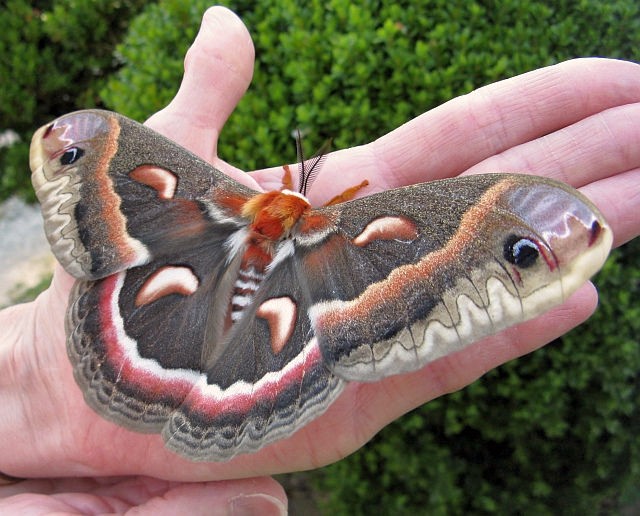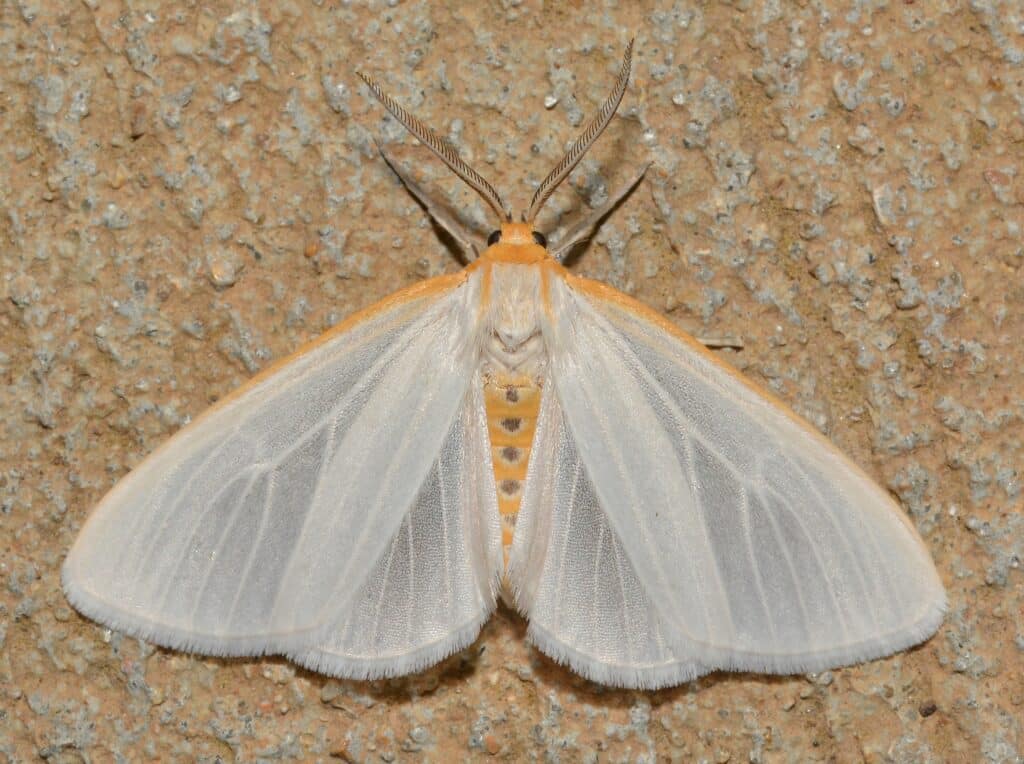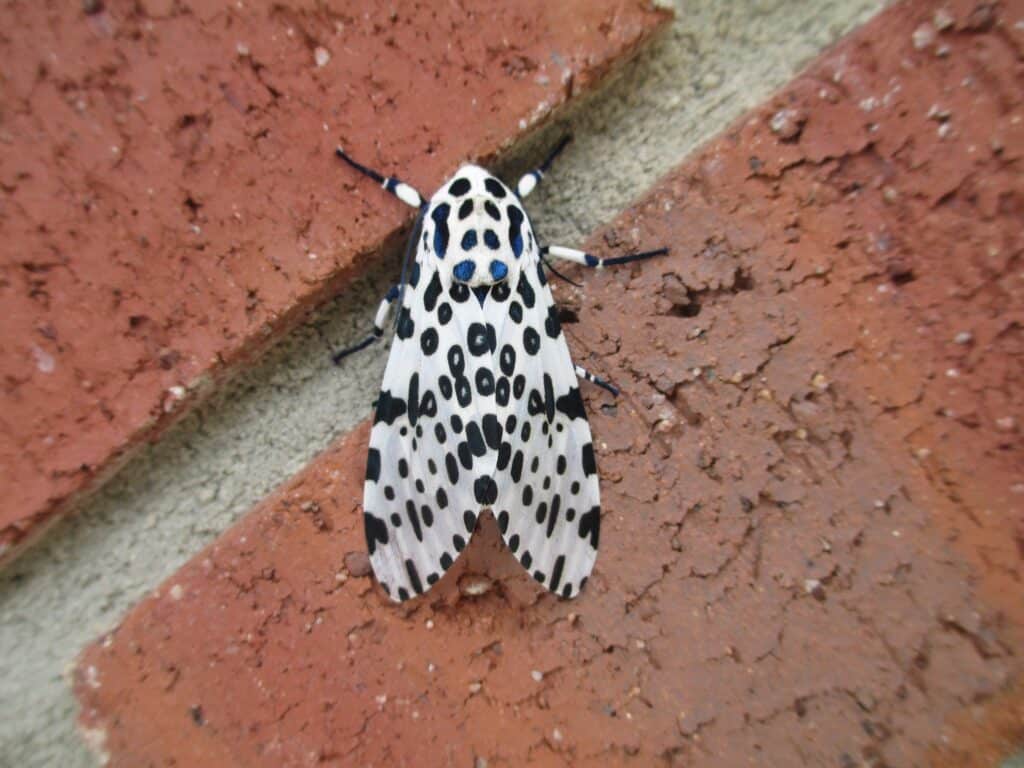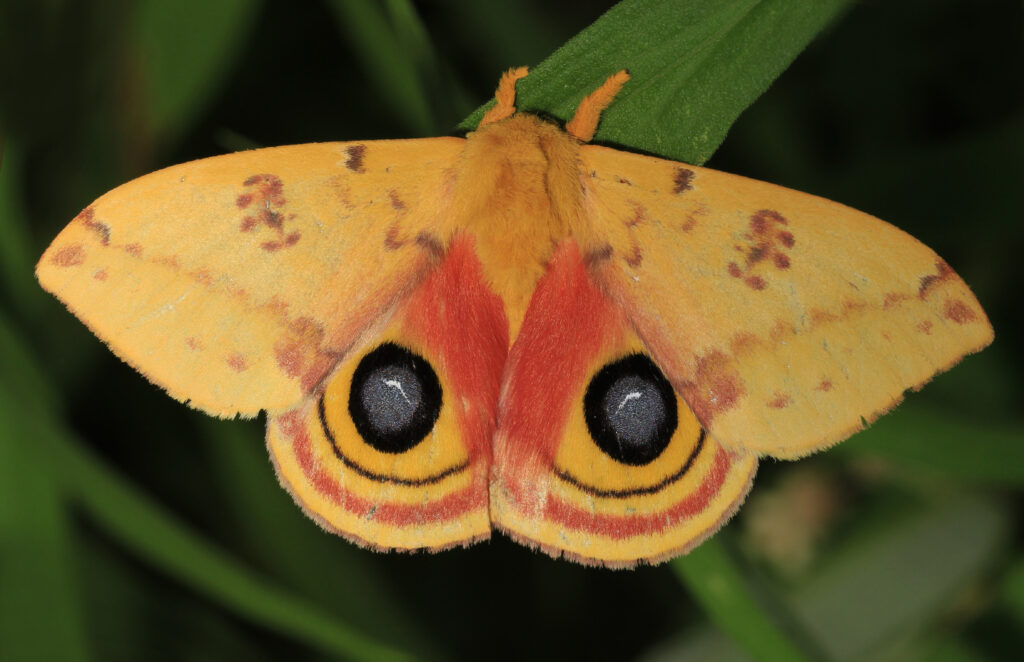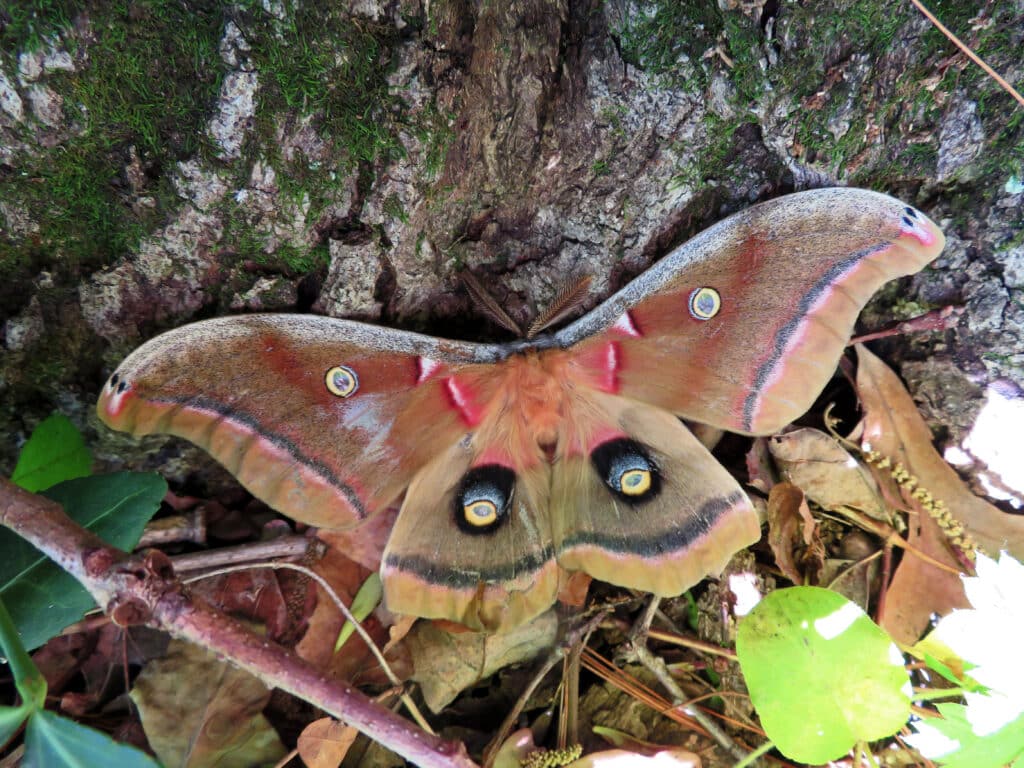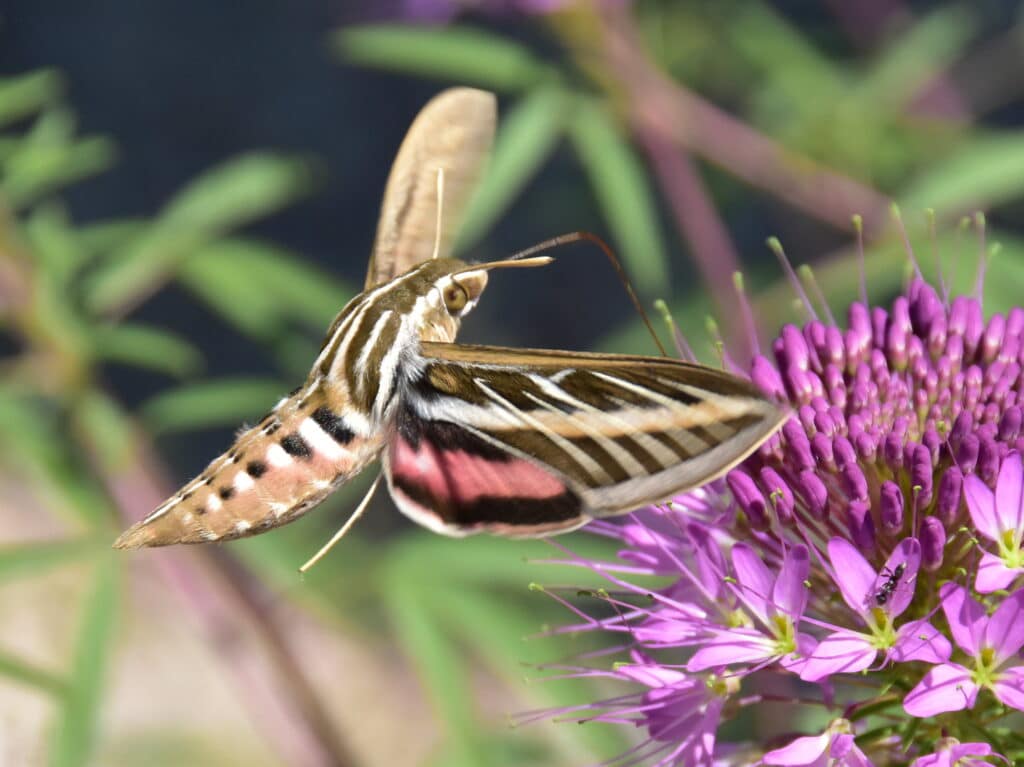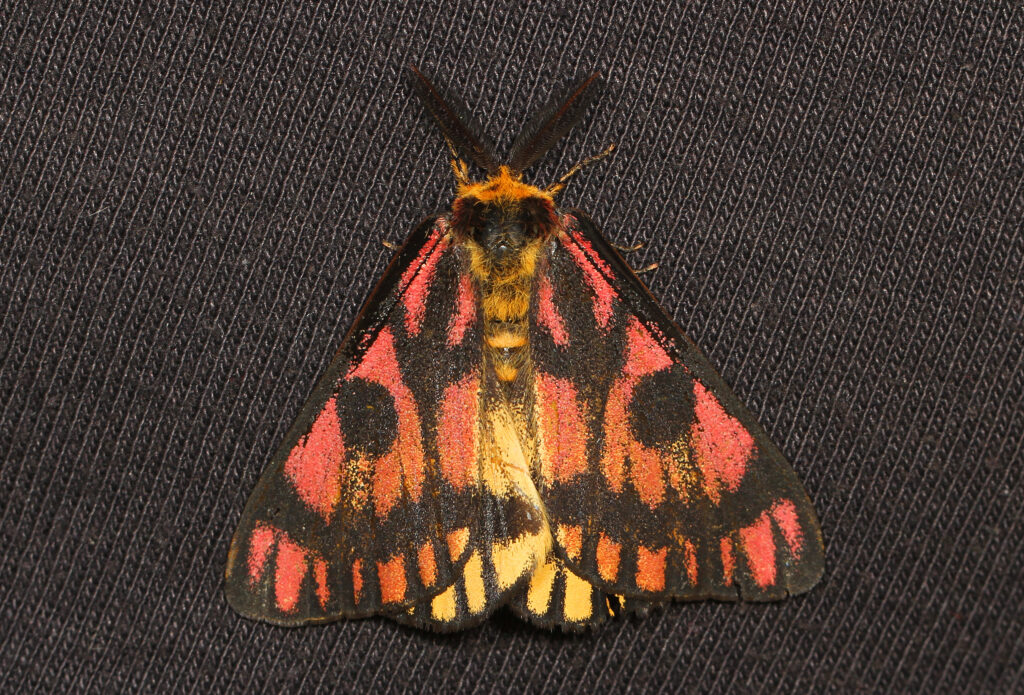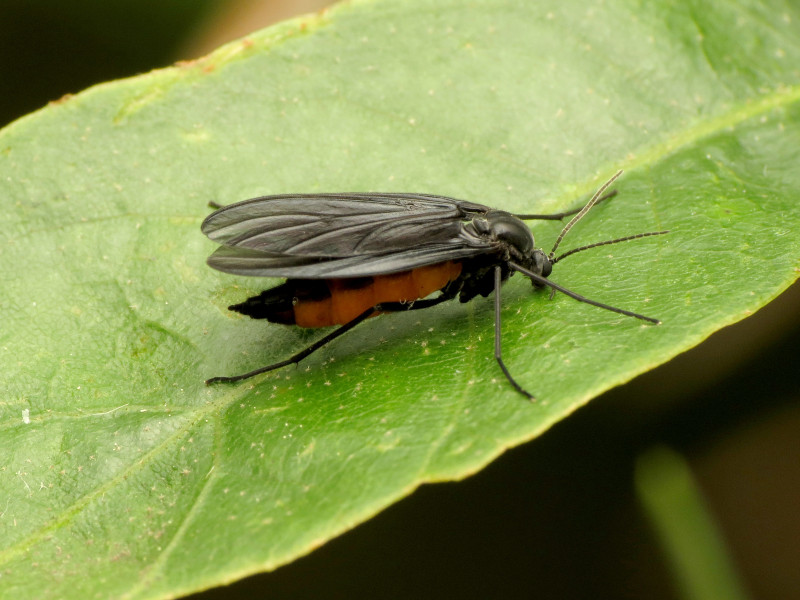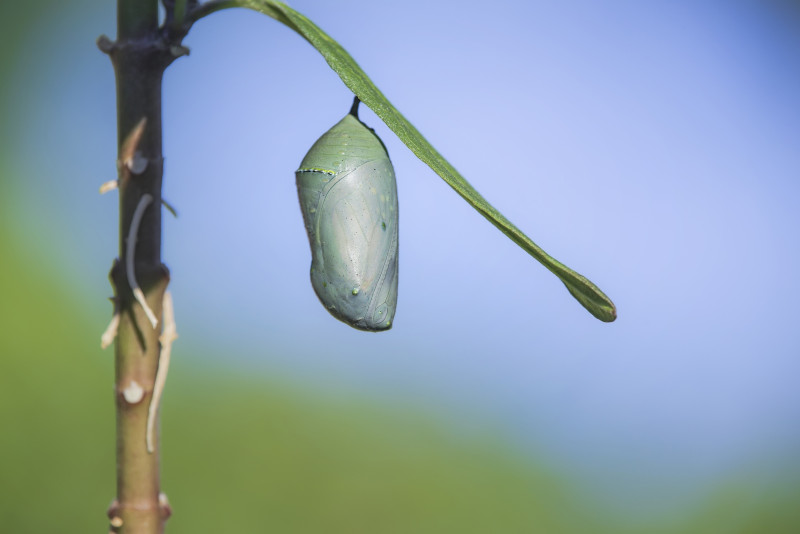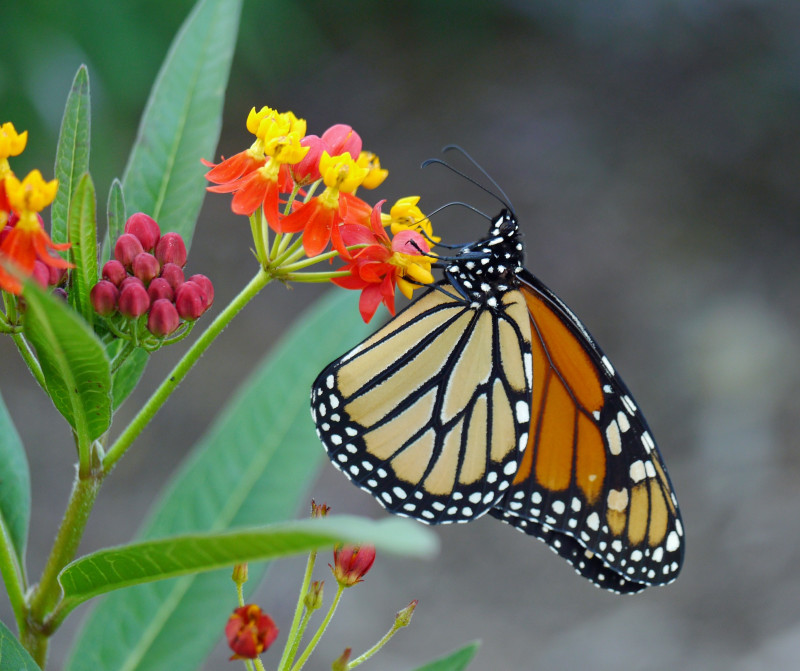Here are some of the moths you might find in your yard. Some are attracted to lights and can be found around porch lights at night. In the daytime, look for moths resting on the bark of trees, on the underside of leaves, and within crevices. Most moths cause no damage, but a few have notorious larvae known for sucking the life out of plants. Most moths are nocturnal and rest in the daytime. Look for them on bushes, tree trunks, and branches, the underside of leaves, and small cracks, and crevices. Sometimes they’re found clinging to a window screen or behind a porch light.
Cecropia Moth, Hyalophora cecropia
Look at this beauty! And its size! The female Cecropia Moth is North America’s largest native moth, with a wingspan of 6.0 inches (15 cm). The one above isn’t even a female, so you can see how large both sexes are. As larvae, they eat constantly but don’t eat at all as adults. Their short adult lives of seven to ten days are spent finding mates and laying eggs. They’re found as far west as the Rockies and north into Canada. Host plants include plum trees, sugar maple, wild cherries, and willows.
Dogbane Tiger Moth, Cycnia tenera
Also called the Delicate Cycnia Moths, you’ll find them all overdogbane, milkweed, and Indian Hemp plants, both as adults and caterpillars. The adults emit a clicking sound, which either disrupts the echolocation of bats or serves as a warning to stay away. It’s thought that they also taste bad. Either way, bats don’t eat them. Unlike most moths, they fly during the day as well as at night, so they’ll be easy to spot. They’re found all across the United States. They’re active from May to October.
Giant Leopard Moth, Hypercompe scribonia
This is a fun one, isn’t it? You can see how it came by its name. The Giant Leopard Moth inhabits the eastern half of the U.S. Their caterpillars feed on broad-leaved plants, including cabbage, cherry, dandelion, maple, orange, sunflower, violet, and willow. Adults don’t seem to feed during their short lives, spending their time locating mates and reproducing.
IO Moth, Automeris io
The Io Moth is found throughout the eastern two-thirds of the U.S. and Canada. It’s large—a wingspan of 2.5 to 3.5 inches (6.0–8.9 cm)—and easily recognized by its size and eye spots on the hindwings. Coloration varies a bit, but, in general, females are reddish-brown, and males are bright yellow. The caterpillars feed on various trees, including Eastern Redbud, willow, oak, currant, pear, and blackberry. As adults, the moths don’t eat and live only for about a week.
Sweetheart Underwing Moth, Catocala amatrix
The Sweetheart Underwing Moth is one of 110 species of underwing moths across the eastern two-thirds of the U.S. and scattered locations in the West and Canada. Most are large, and all have beautiful, bold, underwing colors you can’t possibly miss when they open their wings wide. They occur in July and September near deciduous woodlands (including suitable habitats in cities), where their larvae feed on tree foliage. Look for these moths clinging to tree trunks in your yard during the daytime and around lights at night.
Polyphemus moth, Antheraea polyphemus
Another moth with large eye spots is the beautiful Polyphemus Moth, one of the largest silk moths, with a wingspan of 3.9 to 5.9 inches (10–15 cm). It’s called a silk moth because it can produce silk to construct its cocoon. They’re widely distributed across the U.S. and Canada. Adults don’t eat, but their caterpillars feed on the foliage of trees and shrubs, including oak, willow, maple, and birch.
White-lined Sphinx Moth, Hyles lineata
It’s a real treat when you spot a White-lined Sphinx Moth feeding on your flowers. They hover like hummingbirds and are often mistaken for one. Mainly because they’re nearly as large as Ruby-throated Hummingbirds. As adults, they feed on nectar and come out late in the afternoon and early evening. So, look closely; what you think is a hummingbird might be this beauty. As caterpillars, they feed on tree leaves, such as willows, apples, and elms. They also feed, unfortunately, on tomato plants. Tip: Rather than plucking their large caterpillars off your tomato plants, you can save their lives by planting extra tomato plants so these guys can live. Just move them (they’re big but harmless) from your plants to “theirs.” It’s a win/win! They’re found all across the U.S. and into Canada.
There are about 1,450 species of sphinx moths. They’re also known as hummingbird moths and hawk moths. Many of their caterpillars are called hornworms.
Eastern Black Swallowtail, Papilio polyxenes
The Eastern Black Swallowtail, also known as the American Swallowtail and Parsnip Swallowtail, is distinctive because of its coloration and two long tails. It’ll be hard to miss as it flutters around in your garden. It’s found across the U.S. and into Canada. Adults nectar from a variety of flowering plants, including red clover, milkweed, and thistles. Their caterpillars feed on the leaves of plants in the parsley family, which includes Queen Anne’s Lace, carrot, celery, dill, and sometimes those in the citrus family.
Sheep Moth, Hemileuca eglanterina
Here’s another beauty you can’t miss when it visits your yard. With a wingspan of 2.6 to 3.4 inches (6.5–8.7 cm), you’ll easily spot it. Adults don’t feed, but their caterpillars eat Mountain Lilac, mountain mahoganies, Bitter Cherry, Bitterbrush, Snowberry, currants, wild roses, willows, and others. Sheep Moths are found across the western half of the U.S. and British Columbia.
All about butterflies and moths
In your yard: bees, wasps, ants, and sawflies
Butterflies and Moths of North America


